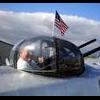Pireps on firewall forward HP + STC
-
Members Online
- bigmo
- 885EW
- pkellercfii
- Zippy_Bird
- katzhome
- ProtoFly
- eman1200
- 1980Mooney
- Aaviationist
- Marc B
- jeff.reynoljm
- 201Steve
- Danb
- Fly Boomer
- EricJ
- hammdo
- DEGWS
- LANCECASPER
- marcusku
- Guy123
- A64Pilot
- Jim F
- MB65E
- mooniacX
- PeytonM
- atpdave
- Igor_U
- ajudson
- AJ88V
- raymondscott0321
- Justin Schmidt
- silentwing22
- Brandt
- Bolter


Recommended Posts
Join the conversation
You can post now and register later. If you have an account, sign in now to post with your account.